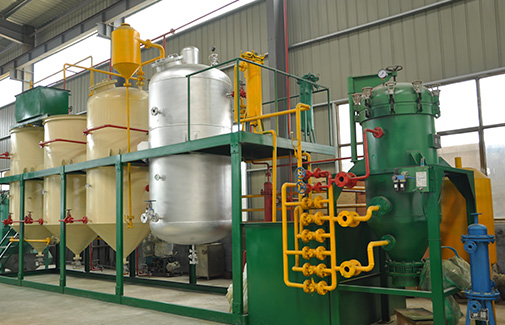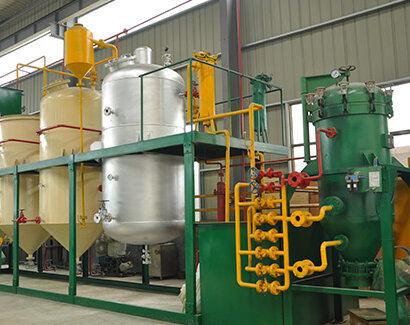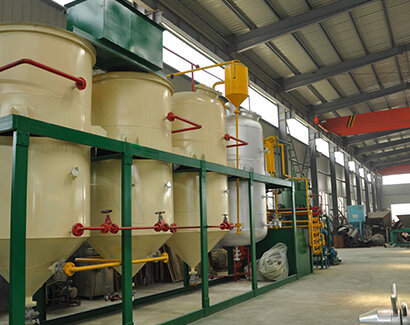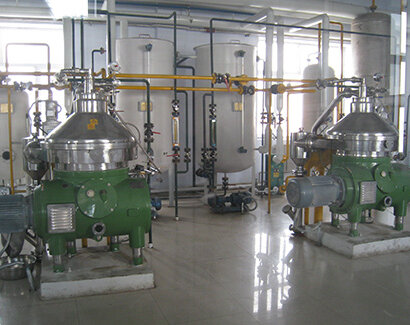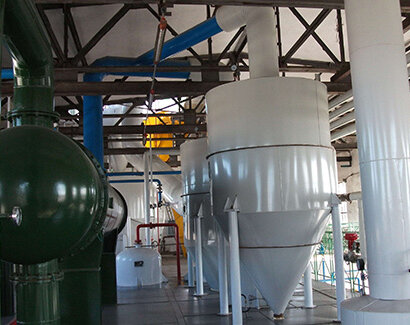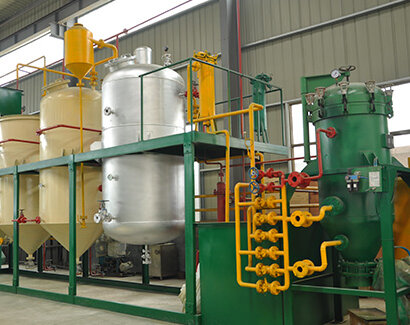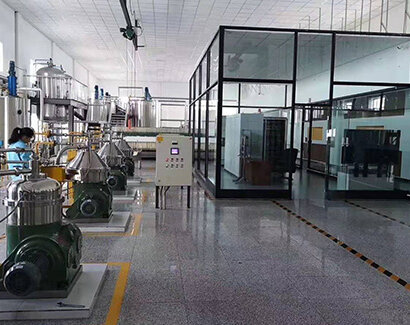The refining process of edible vegetable oils can be divided into general edible oil refining, High grade edible oil refining and special oil refining. The refining process varies according to the use and quality requirements of the oil products. The small capacity crude oil refining generally adopts intermittent refining. cover a small area, easy to operate and low cost.
Batch Refining Process
1. The process of removing colloidal impurities in crude oil is called degumming. Because the colloidal impurities in crude oil are mainly phospholipids. degumming is often called dephosphorization in industrial production. Degumming before alkali refining can reduce the loss of neutral oil, improve the quality of alkali refining, save the amount of alkali used, and obtain valuable by-products-phospholipids.
There are many degumming methods, such as hydration degumming, acid refining degumming, adsorption degumming, and chemical reagent degumming. The method we currently use is hydration degumming.
2. The function of the decolorization section is mainly to remove the pigment in the oil, and at the same time, it can also remove the trace metal in the fat, remove the residual trace soap particles, phospholipids and other colloids and some odorous substances, and remove polycyclic aromatic hydrocarbons and residues. Pesticides, etc. Adsorption decolorization: Activated clay is usually used as a decolorizing agent.
3. Oil deodorization is a process that uses the difference between the volatility of odorous substances in oil and fatty acid triglycerides to remove odorous substances by steam distillation under high temperature and high vacuum conditions.
The above technology process is the batch refining process of general oil.
There are many degumming methods, such as hydration degumming, acid refining degumming, adsorption degumming, and chemical reagent degumming. The method we currently use is hydration degumming.
2. The function of the decolorization section is mainly to remove the pigment in the oil, and at the same time, it can also remove the trace metal in the fat, remove the residual trace soap particles, phospholipids and other colloids and some odorous substances, and remove polycyclic aromatic hydrocarbons and residues. Pesticides, etc. Adsorption decolorization: Activated clay is usually used as a decolorizing agent.
3. Oil deodorization is a process that uses the difference between the volatility of odorous substances in oil and fatty acid triglycerides to remove odorous substances by steam distillation under high temperature and high vacuum conditions.
The above technology process is the batch refining process of general oil.
Dewaxing process
Most vegetable oils contain trace amounts of wax, mainly from the hulls of oil seeds. The hulls have a high wax content, and the prepared crude oil also has a high wax content. Wax is soluble in oil at a temperature above 40 degrees. Generally, crude oil contains a certain amount of wax. The wax content of various crude oils is very different, most of the content is very small, so no need to consider it during oil making and processing; but some have higher wax content, such as corn germ oil (containing 0.01%—0.04%) Sunflower oil (containing 0.06%-0.2%) and rice bran oil (containing 1%-5%) need to be combined with dewaxing/ fractionation.

